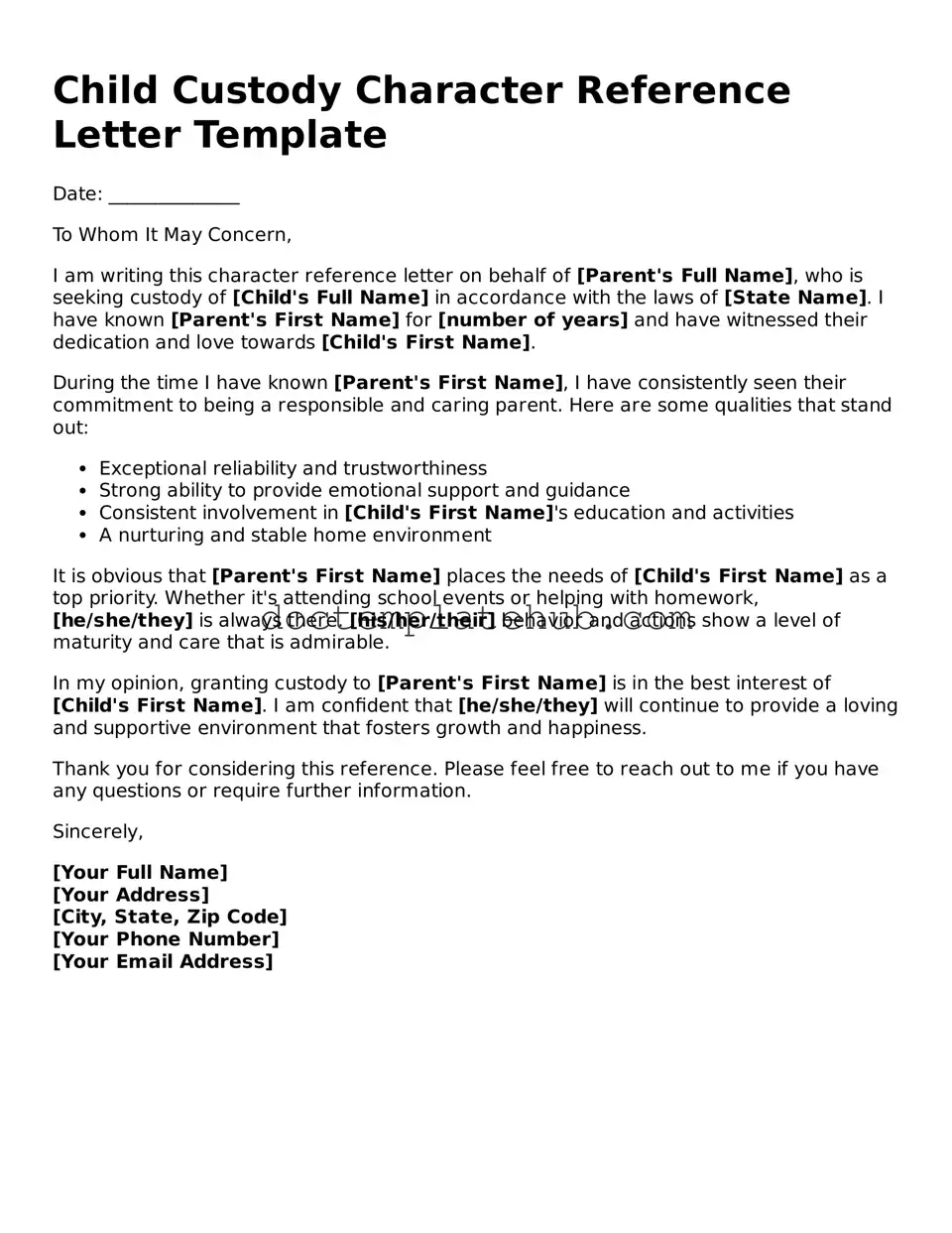A character reference letter for child custody is similar to a personal reference letter, which provides insight into an individual's character and reliability. Personal reference letters often serve to vouch for someone’s integrity, work ethic, and overall personality. Just like a character reference letter for custody, it aims to establish trustworthiness and suitability, often in contexts such as job applications or rental agreements. Both documents require the writer to provide specific examples that illustrate the person's positive attributes, reinforcing their credibility and reliability.
Another document that shares similarities is a letter of recommendation. Typically used in academic or professional settings, a letter of recommendation highlights an individual's skills and accomplishments. Much like a character reference letter for custody, it focuses on the positive traits of the person being recommended. Both documents should be tailored to emphasize qualities that align with the needs of the situation, whether that be a child’s best interest in custody matters or suitability for a job or school.
A statement of support can also be compared to a character reference letter for child custody. This document is often used in various legal contexts to express support for an individual’s case. Like the custody letter, a statement of support outlines the writer's relationship with the individual and provides specific examples of their positive behavior. Both documents aim to influence a decision-maker by presenting a compelling narrative about the individual’s character.
Similarly, a testimonial letter serves as another comparable document. Testimonials are often used in business or personal contexts to validate someone's skills or character. They share a common goal with character reference letters for custody: to affirm the individual’s positive qualities and suitability for a specific role or situation. Both types of letters rely on the writer's personal experiences and observations to build a case for the individual's character.
A parenting plan can also be likened to a character reference letter for child custody, albeit in a different context. While a character reference letter focuses on the individual’s traits, a parenting plan outlines how a parent intends to raise their child after separation or divorce. Both documents require careful consideration of the child's best interests and should reflect a thoughtful and responsible approach to parenting.
Additionally, a personal affidavit can be compared to a character reference letter for child custody. An affidavit is a sworn statement of facts, often used in legal proceedings. While it is more formal and legally binding, it can still serve to support an individual's character by detailing their relationship with the child and their parenting abilities. Both documents aim to provide a clear picture of the individual’s capabilities and intentions regarding child custody.
Another similar document is a family court report, which is prepared by a social worker or court-appointed investigator. This report assesses the family dynamics and the suitability of each parent for custody. Like a character reference letter, it evaluates the individual's character and parenting skills, although it does so in a more formal, fact-based manner. Both documents seek to inform the court about what arrangement would serve the child's best interests.
A guardian ad litem report also shares similarities with a character reference letter for child custody. A guardian ad litem is appointed by the court to represent the best interests of the child. Their report includes observations about each parent's relationship with the child and their parenting abilities. Both documents aim to provide insights that help the court make informed decisions regarding custody arrangements.
Lastly, a divorce settlement agreement can be compared to a character reference letter for child custody. While a settlement agreement outlines the terms of the divorce, including custody arrangements, it reflects the considerations of both parties regarding the child’s welfare. Both documents emphasize the importance of the child’s best interests and require thoughtful negotiation and consideration of each parent’s role in the child’s life.
